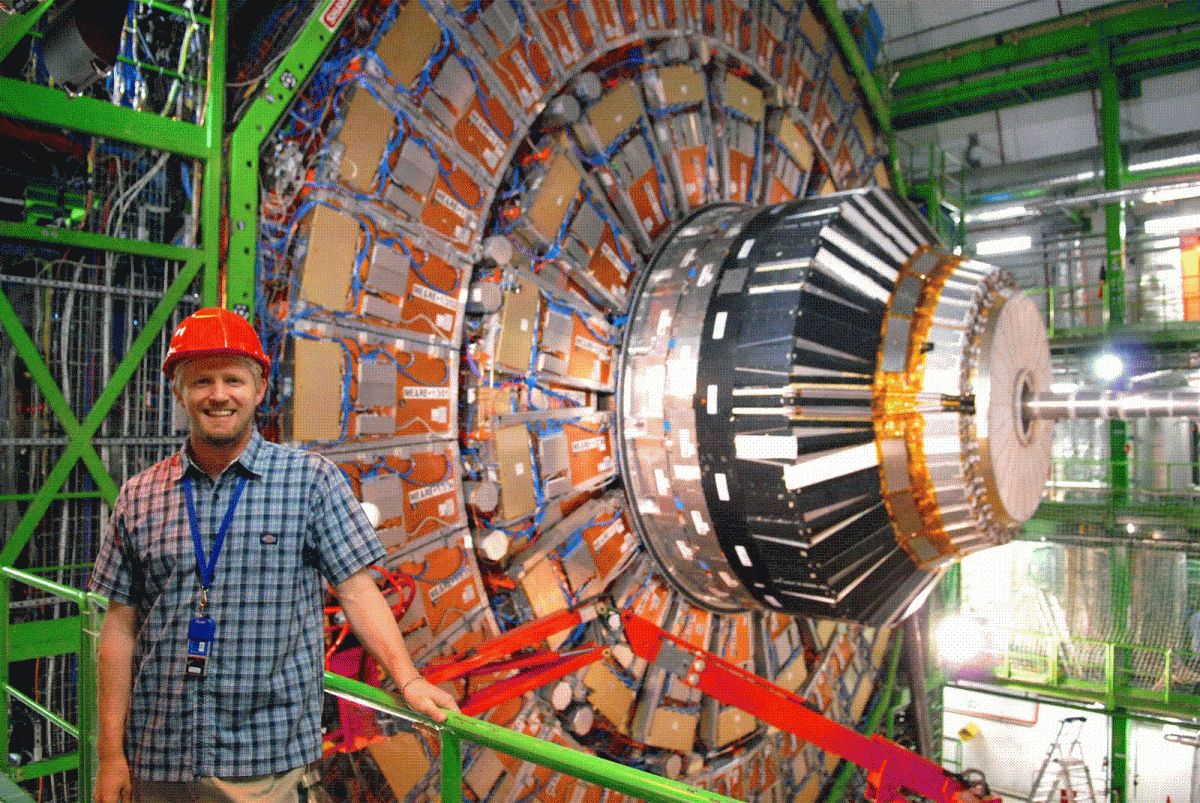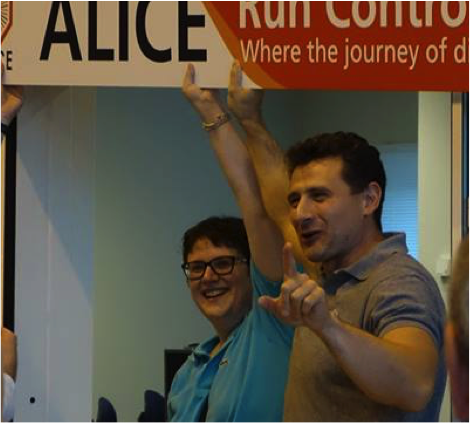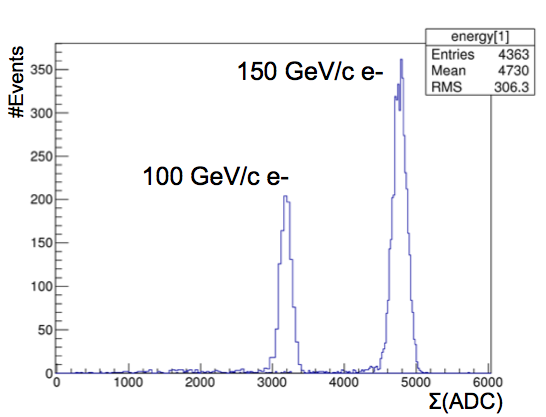Focus on the Run Coordinators of the LHC Experiments
As the preparations for Run2 are coming to an end, and the first collisions are scheduled to take place in a few weeks, the control rooms of the LHC experiments have become hives of activity, getting ready to record the first data.
Run Coordinators are responsible of the data taking operations of the detectors during a certain running period and represents the experiment's interface to the LHC accelerator control centre (CCC).
In this and the following issue of the PH Newsletter, we will introduce the Run Coordinators of the LHC experiments, who discuss with us their professional background, and the challenges that their role entails. This time we meet the Run Coordinators of CMS, LHCf and ALICE.
Greg Rakness: CMS co-Run Coordinator
The CMS Run Coordination team is made up of three people: Christoph Schwick and myself as co-Run Coordinators and Silvia Goy Lopez as coordinator of the Detector Performance Groups. Together we manage the commissioning and operation of the CMS detector with the overarching goal to deliver physics quality data efficiently to the collaboration.

I did my PhD at University of Colorado Boulder, spending my formative years working on drift chambers and writing my thesis on phi meson production in the HERMES experiment at HERA. As a postdoc, I worked on Pb-glass and Pb-scintillator sampling electromagnetic calorimeters, writing papers on spin and heavy ion physics in the STAR experiment at RHIC. At this point I changed my focus to high energy particle physics since it was becoming clear that the future was at CERN, and I joined up with the CMS experiment working on the trigger system in the Cathode Strip Chambers. The dynamic, multi-faceted puzzle of complicated interfaces within this muon trigger subsystem and the challenge of integrating it into the CMS trigger and data acquisition machine got me “hooked” on operations, and in 2012 I became the deputy Run Coordinator. I have been part of the CMS Run Coordination team ever since.
During this Long Shutdown 1 (LS1), CMS began the implementation of a multi-step plan to upgrade the detector for the new conditions expected from LHC during Run-2, namely higher energy, smaller spacing between bunches, and larger luminosity per bunch. To meet these expectations, every subsystem in CMS has been modified during LS1 to improve its performance. To commission, we chose the strategy to work on interfaces early, and over the past year we have performed a series of nine short “mid-week global runs” to bring subsystems together to run as one coherent whole. This strategy has paid off, and we are presently collecting data in “production mode” to align the detector with cosmic rays.
The thing I truly like about my job as Run Coordinator is the people I work with. Everybody I know works very hard, and there is a wide range of cultures and a variety of personalities which I cherish. I appreciate the opportunity to work with the LHC operations teams and the other experiments’ Run Coordinators, together with the LHC Programme Coordinators. Most of all, I cannot express enough appreciation I have for the team spirit which pervades the atmosphere in operations. Everyone knows that in order to be a success, the entire team has to succeed. Every subsystem in CMS must operate at the highest level, the LHC must deliver high intensity collisions, and, strange as it may sound, our “competitors,” ATLAS, LHCb, and ALICE, need to discover as much new physics as we do.
A colleague once advised me that new features would be discovered with every new operating condition, with every increase in luminosity, every change in trigger rate… CMS is looking forward to collisions in 2015!
Watch Greg Rakness talking about the challenges of "herding cats".
Federico Ronchetti: ALICE Run Coordinator
 I started my carrier at the Italian Institute for Nuclear Physics (INFN) where for my master thesis I commissioned the optical and electronic readout of the large angle electromagnetic calorimeter installed in the CLAS detector of the Thomas Jefferson National Accelerator Facility, in Virginia, USA. After defending my thesis, I joined the CLAS collaboration as INFN post-graduate fellow and afterward as a graduate student at the University of Rome “Ostiense”. I defended my PhD on the QCD description of the deuteron photodisintegration process in the few GeV region. During my Post-Doc, I worked at the Frascati National Laboratories of INFN in the field of scientific computing for two years and then I was employed by INFN and joined the ALICE Collaboration in 2006. At the Frascati National Laboratory of INFN, I have been in charge of the European prototyping and production of the first four super-modules of the Electromagnetic Calorimeter (EMCal), which were installed in ALICE in July 2009 (six month ahead of schedule).
I started my carrier at the Italian Institute for Nuclear Physics (INFN) where for my master thesis I commissioned the optical and electronic readout of the large angle electromagnetic calorimeter installed in the CLAS detector of the Thomas Jefferson National Accelerator Facility, in Virginia, USA. After defending my thesis, I joined the CLAS collaboration as INFN post-graduate fellow and afterward as a graduate student at the University of Rome “Ostiense”. I defended my PhD on the QCD description of the deuteron photodisintegration process in the few GeV region. During my Post-Doc, I worked at the Frascati National Laboratories of INFN in the field of scientific computing for two years and then I was employed by INFN and joined the ALICE Collaboration in 2006. At the Frascati National Laboratory of INFN, I have been in charge of the European prototyping and production of the first four super-modules of the Electromagnetic Calorimeter (EMCal), which were installed in ALICE in July 2009 (six month ahead of schedule).
I was then relocated at CERN at the end of 2009 for the commissioning of the EMCal readout and trigger electronics in preparation of the first phase of the LHC startup. In 2010 I stayed at CERN as detector expert, and in 2011 I was in charge of the EMCal High Level Trigger software development (I have coordinated a team of four between PhD students and Post-Docs) and Period ALICE Run Coordinator for the preparation of the heavy yon run. In 2012 I was appointed as EMCal Run Coordinator and finally in 2013 I was elected ALICE Run Coordinator (RC) by the collaboration board.
I started my - somewhat unusually long - mandate as RC just after the end of the proton-lead run of 2013, since I have been operating within the ALICE Technical Coordination as leader of the Consolidation Task Force for the LHC Long Shutdown 1 (LS1) which has been a time of intense installation, consolidation and upgrade work for the ALICE detector. After major detector installations and the massive interventions performed on almost all components of the ALICE hardware, electronics, and supporting systems we began an early integration campaign at the end of 2014 and ALICE took data during the recent injection tests (from the SPS to the LHC); we now all look forward for the imminent restart of the proton collisions for Run2.
Yoshitaka Itow: LHCf Run Coordinator
 Yoshitaka Itow belongs to the community of cosmic-ray physics. He pursued his PhD thesis in 1998 at the Nagoya University studying a pulsar wind nebula in the CANGAROO collaboration. Then as a post-doc, he worked in the CELESTE collaboration at Ecole Polytechnique, France, continuing gamma-ray astronomy at 100GeV region from 1998 to 2000. In 2000, he moved back to Nagoya as an assistant professor and concentrated on the observations of solar energetic particles, especially solar neutrons at high mountains. He also worked for the optical observation of gravitational micro-lensing phenomenon in the MOA collaboration to search for the dark celestial objects like black holes, neutrons stars and extra-solar planets and he says: “I contributed to the construction of the MOA-II 1.8m telescope and the 80M pixel mosaic CCD camera, MOA-cam3, in New Zealand”.
Yoshitaka Itow belongs to the community of cosmic-ray physics. He pursued his PhD thesis in 1998 at the Nagoya University studying a pulsar wind nebula in the CANGAROO collaboration. Then as a post-doc, he worked in the CELESTE collaboration at Ecole Polytechnique, France, continuing gamma-ray astronomy at 100GeV region from 1998 to 2000. In 2000, he moved back to Nagoya as an assistant professor and concentrated on the observations of solar energetic particles, especially solar neutrons at high mountains. He also worked for the optical observation of gravitational micro-lensing phenomenon in the MOA collaboration to search for the dark celestial objects like black holes, neutrons stars and extra-solar planets and he says: “I contributed to the construction of the MOA-II 1.8m telescope and the 80M pixel mosaic CCD camera, MOA-cam3, in New Zealand”.
Since 2001 he is a member of the LHCf collaboration. Following the first R&D work and the construction of the prototype LHCf detector, Itow lead the LHCf Japanese team. Based on the success of the prototype test at the SPS north area in 2004, LHCf completed its TDR and was accepted as the 6th experiment at LHC in 2006. During the preparation of TDR, I was assigned as the technical coordinator of the experiment. “In a small experiment with about 30 members, one has to often play other roles include the run coordination.”
Perhaps the most important task of the run coordinator is to keep the physics operation time of LHCf. Because LHCf requires very low luminosity operation with low pile-up and limited number of colliding bunches, this conflicts with the main goal of the big experiments. High radiation at the LHCf installation location does not allow us to wait long time for the dedicated run. Thanks to the understanding of the LHC programme coordinators and the run coordinators of the other experiments, we successfully took data in 2009-2010 pp collisions and 2013 pPb collisions. Moreover, already have agreement to have ‘special run’ during the Run2 in the end of May 2015.

ADC distribution for each beam energy and response linearity (ADC vs beam energy)
Except from the fact that we require low luminosity operation, we usually do not have an impact on the LHC operations and vice versa. Once LHC restarts, as a run coordinator, to understand the mid term (days to weeks) schedule is important. Last but not least, because we do not have a large manpower for data taking shift, correct and up-to-date information of the schedule becomes very important for arranging the shifters and ensure a smooth operation and data-taking during the next LHC run!
